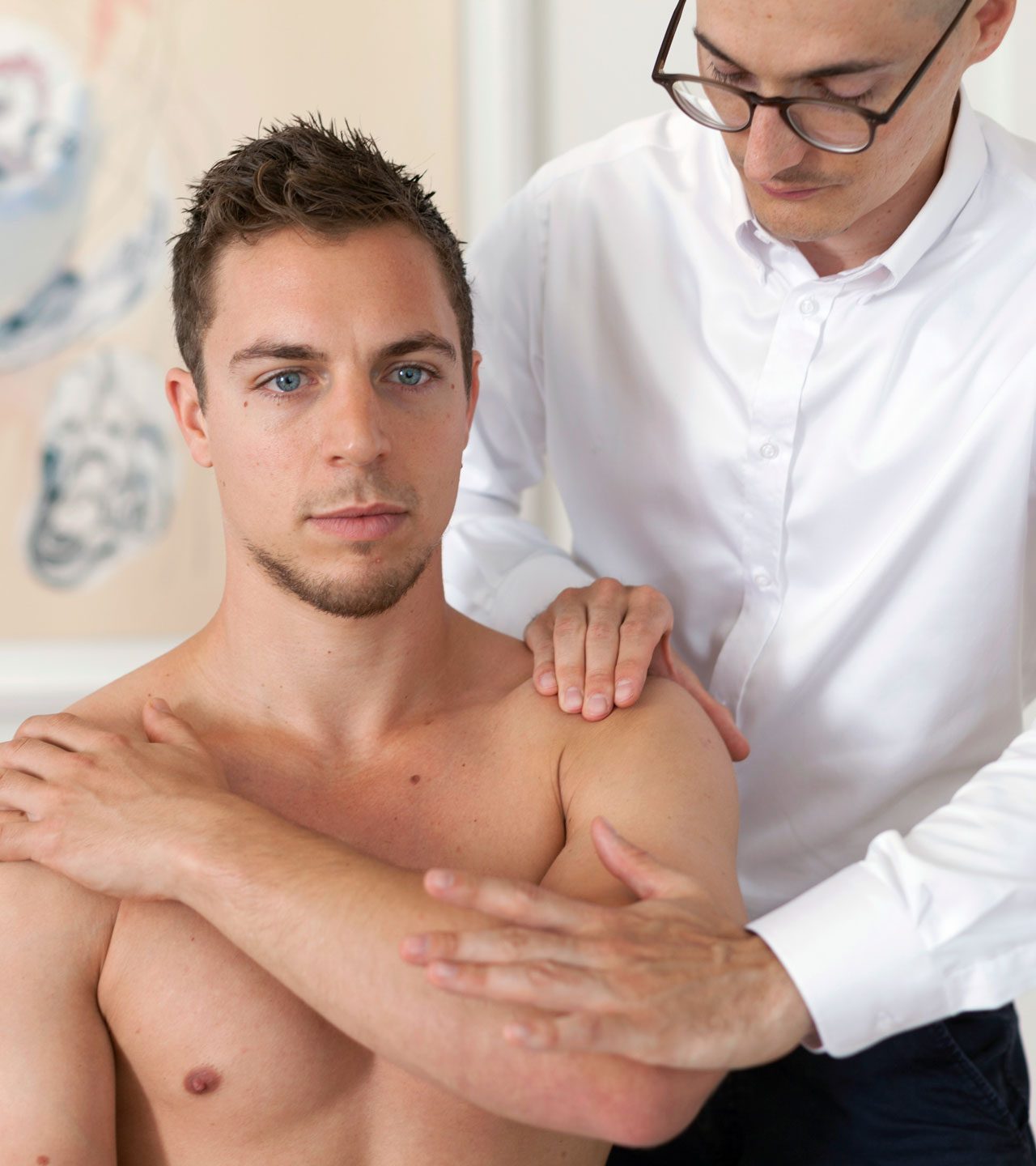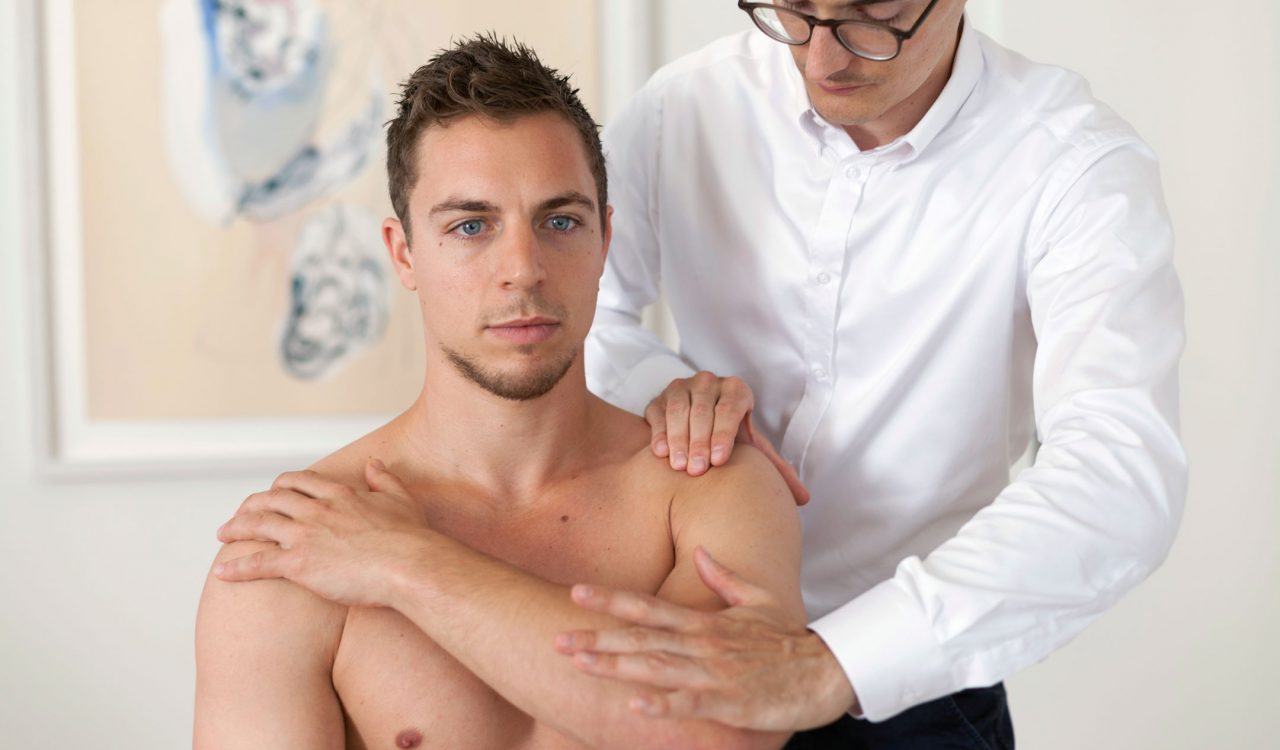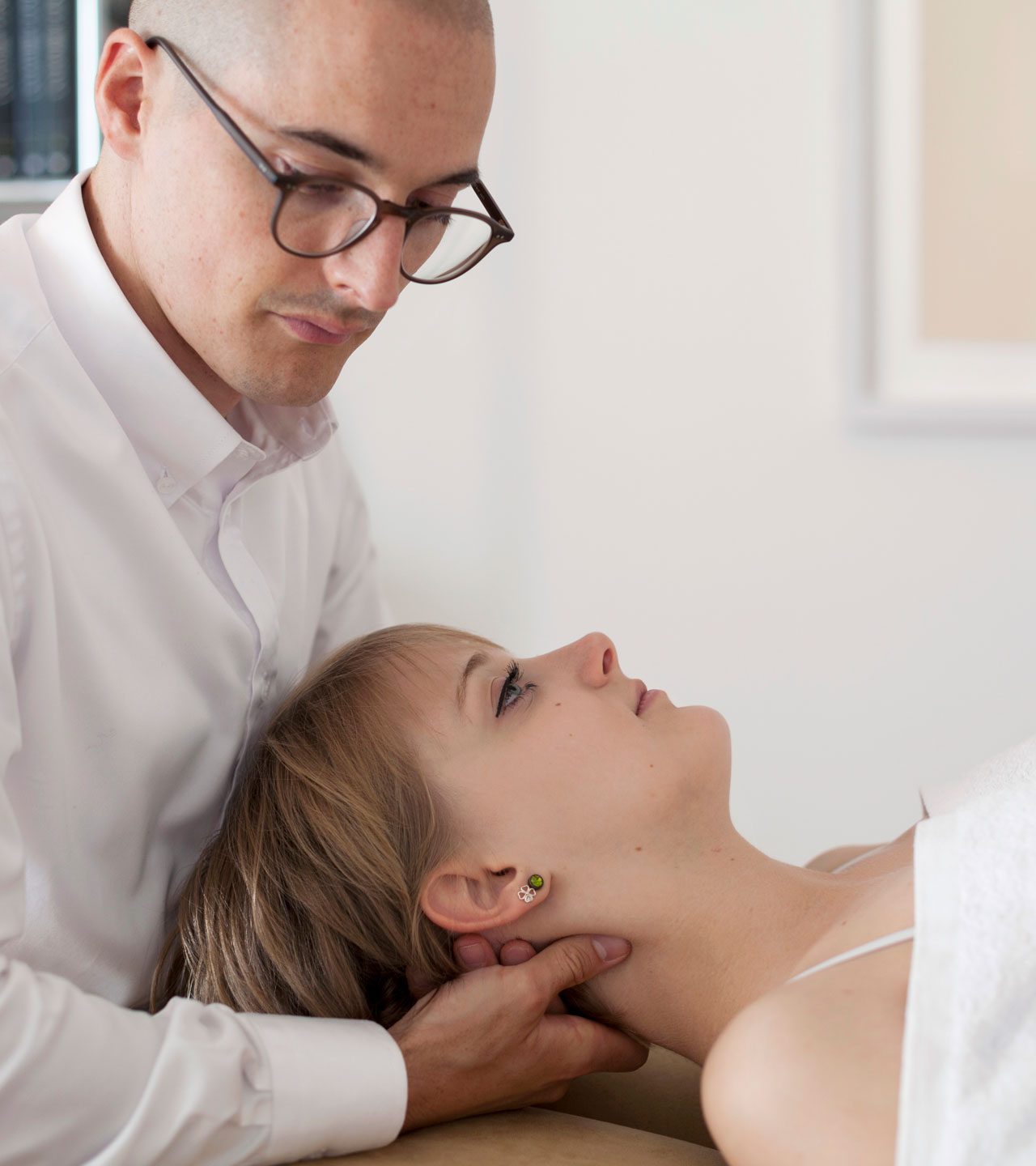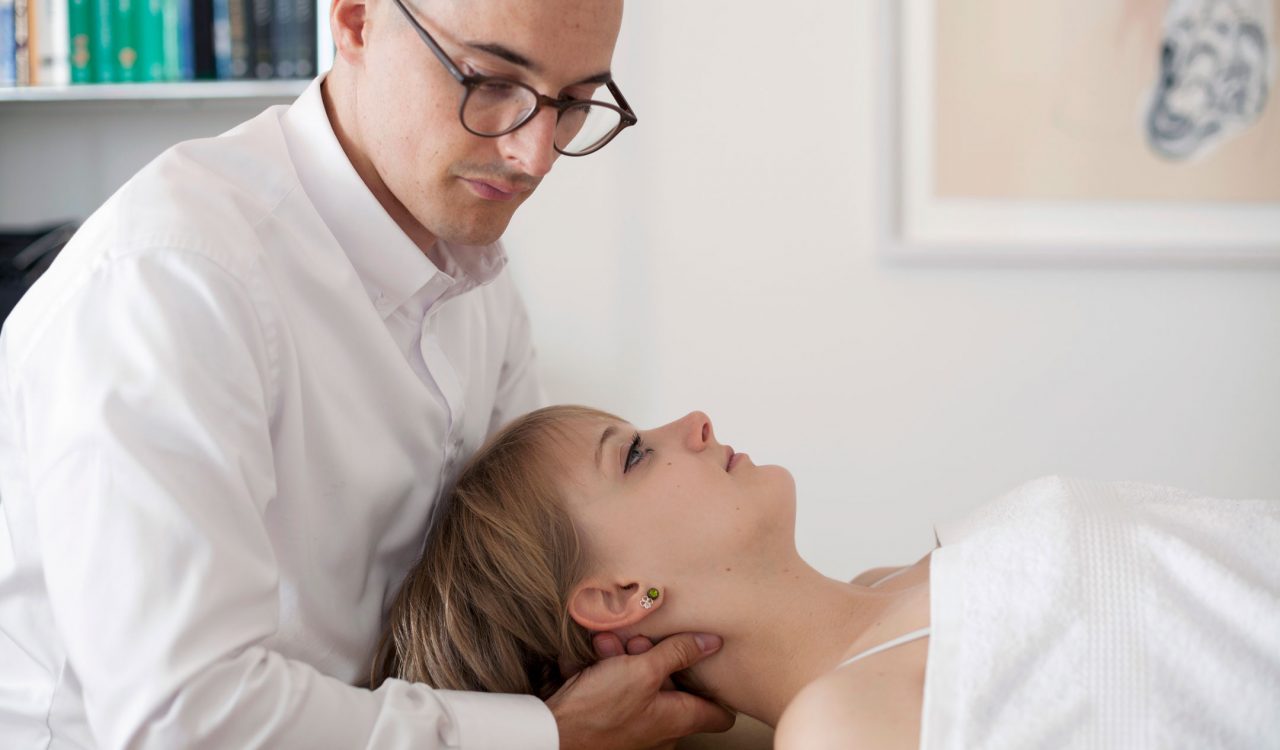A holistic health profession for people of all ages and backgrounds
Osteopathy serves to diagnose and treat functional disorders. This means not putting the focus onto the pathology or dysfunction of one specific structure, but the connection and correlation of various structures and systems.
Osteopathy complements traditional medicine and provides holistic, innovative solutions for a wide range of health conditions.
FAQ: Frequently asked questions around osteopathy
-
A thorough clinical diagnosis is fundamental to any treatment. Every consultation starts with an interview and a physical examination. From this we develop an individual treatment plan which always contains elements of self-management.
What happens in the first consultation?
A comprehensive discussion serves as an important first step in identifying the problem and understanding you as an individual. Please bring the results of any previous medical examinations (e.g x-rays, MRI, CT, blood values) with you if available. Based on the results of our initial discussion, the underlying cause of the problem will be examined. Remember, the symptom of your pain is often due to a problematic dysfunction somewhere else in the body. Treatment begins once the diagnosis has been made and you have been informed about your prognosis, options and alternatives.
How many consultations are required?
The number of consultations required, varies depending on the symptoms and nature of the problem. As a rough guide, a suddenly developing condition usually requires 1 to 4 sessions to treat. The longer the condition has been present the more treatments are usually required. At the beginning of every session the outcome of the previous consultation is discussed and treatment adapted accordingly.
What is the basis of osteopathy?
Osteopathy is a manual method of treatment.
Joint structures, organs, nerves, vessels and connective tissue (fascia) are examined in terms of their flexibility and tension relationships. The whole system is diagnosed and treated in a holistic manner.
Osteopaths have a broad spectrum of techniques and skills at their disposal to restore tissue function. The selected technique depends on the nature of the tissue and your personal needs.
What are possible reactions to treatment?
Osteopathic treatments are generally not painful and patients usually feel better after treatment. However, people react differently and some discomfort may be experienced.
For example aching muscles, fatigue or even temporary worsening of the condition may occur. In case of side effects, the intensity of the treatment will be adapted. This highlights the importance of good communication between the osteopath and patient.
It is however important to understand, side effects should not be considered undesired entirely. In fact, these are signs of change any healing process is accompanied by.
-
Normally healthy nutrition, correctly prescribed exercise and rest are enough to maintain your health.
Especially individuals placing high demands on their bodies such as athletes, dancers, musicians or even newborns with a difficult delivery can greatly benefit from preventative osteopathy.
Dysfunction causes structural changes which can lead to disease or injury. Maintaining efficient function therefore supports correct structure which plays an essential role in your health. Why wait for the structures to change when dysfunction can be assessed and corrected?
-
The scientific basis of Osteopathy are anatomy, biomechanics and physiology, among others.
The human body is more than just the sum of its constituent parts. It is a complex entity composed of interacting networks. This holistic approach forms the core foundation of osteopathic medicine.
The origins of Osteopathy
Osteopathy is a form of manual therapy and one of the oldest medical practices in history. Similar methods of treatment were first mentioned by Hippocrates in the sixth century (B.C.). Drawings in ancient Egypt suggest manual techniques were also in use then.
In the second half of the 19th century, osteopathy first appeared as a technical term in the United States, based on conventional medicine of that time. The so-called visceral osteopathy (treatment of the organs) dates back to the same time period and was first used in Northern Europe.
Osteopahy has a rich background of medical expertise. However, the scientific research into its methods is comparatively new. Nevertheless, the latest developments and preliminary findings ensure its continuous progress.
Special application fields in osteopathy
-
From pregnancy, through birth all the way to adulthood humans go through many crucial milestones of growth and development. Throughout this growth disruptions can develop or manifest in the musculoskeletal system.
Osteopathy for children aims to provide or restore freedom of movement and growth to all parts of the body through manual examination and treatment.Common indications for Osteopathy in newborns are: problems latching or swallowing, inconsolable crying or colic, torticollis.
Throughout childhood and adolescence Osteopathy can accompany treatment for dental misalignments, scoliosis, hip problems as well as asthma, bronchitis and recurring ENT problems.
Furthermore, patients with learning difficulties, behavioural peculiarities or Autism may benefit from osteopathic treatment.
-
The many unique elements of the female anatomy, hormonal system and psychosocial experience deserve specific consideration in the osteopathic and general medical approach to a complaint.
This includes classic gynaecological areas such as menstrual pains, pregnancy and post-natal care, supporting fertility, bladder incontinence, cystitis or irritable bladder, but also seemingly unconnected issues such as pelvic, back, tailbone or neck pain.
Other conditions for Women’s health specific osteopathy can include endometriosis, uterine prolapse, myomas, cysts or painful sexual intercourse.
The osteopathic treatment is complimented by extensive education and guidance which is part of the consultation. -
Functional disruptions in the body lead to problems, which can very differently affect the activities of different groups of people. The individual significance of a complaint is highly dependent on the demands the body is put under.
Osteopathy in sports
In sports Osteopathy is frequently used as prevention, but can also find application accompanying a successful rehabilitation. Because Osteopathy emphasizes the functional relationships of all body structures it can help athletes reach or restore their optimal performance.
Through sports overuse injuries appear quite frequently. Those commonly result from suboptimal strain being put on muscles and joints; especially in repetitive motion even small changes in positioning and alignment can cause altered leverage. This can be treated by taking a holistic view of the body with good long-term effects.
An example: reduced rotation in the pelvic girdle during crawl stroke swimming can alter the mechanical load on the shoulder. During the “pushing phase” the body rotates along a longitudinal axis effectively pushing the shoulder out of the water passively. If this rotation is restricted, the shoulder needs to be actively lifted out of the water during the return phase, significantly increasing muscle load and energy demand. This for one will lead to reduced performance but over time can easily progress through muscle spasms, myalgia up to impingement syndrome.
This exemplary chain of events shows that a local treatment approach might provide short term relieve but not be sufficient to resolve this problem in an active athlete. It is therefore important for the osteopath to understand the motion patterns of a sport as well as their correlation to the rest of the body to draft an individual treatment plan for each patient.
Osteopathy in dance
The body as a unit reveals itself strongly in dance. Every part of the body influences the harmony and expression of the whole.
Bodies of dancers are put under a big variety of demands. Both athletic as well as artistic components come with often repetitive movements and sequences that can cause functional disruptions and injuries. Furthermore, dancers are frequently under high pressure to perform with little time for appropriate recovery.
Through the holistic view on the individuum we develop targeted treatment plans and goals in partnership with our patients to maintain and further their health.Osteopathy in music
Musicians frequently submit their bodies to long practice and performance sessions in ergonomically challenging positions. Often, they not only feel the mostly unilateral load on the body but also embody their instrument and the music, demanding a high level of adaptability. Music is not processed purely intellectually but also physically causing specific patterns of tension and pain.
Through Osteopathy we aim through gentle release of tension to restore the suppleness of movement and the bodies ability to unfold in music. Additionally, to the manual work, we are looking for strategies, which allow you to further your health on your own.




